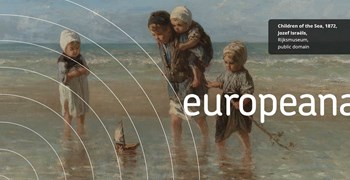The beauty of birdsong: listen, remember, enjoy
Living in bustling cities we often tend to forget about nature, yet it is all around us and in many ways. Some of us might wake up in the morning to the sounds of a couple of birds singing while others hear their tunes through a stroll in the park or while waiting for some sort of public transport to take them along their merry way. Though we may sometimes see or hear them, do we know which ones sing what songs? We’ve picked out three bird songs from Europeana Collections most common birds across Europe. These sounds brought to you by the British Library and the Museum für Naturkunde Berlin are guaranteed to make you take a pause (in your busy life) and listen a little longer if you come across the three little birds pitched by your doorstep.
European Robin
Robins are quite common and favoured winter garden birds because of how well they have adapted to living alongside people and keeping gardeners company in the winter. The male robin is very territorial and will sing throughout the year. Around Christmas, the male robin will sing more powerfully due to breeding territories becoming established. During breeding season, they will start their morning song an hour before sunrise and end half an hour after sunset. In urban areas that are artificially lit, they may be heard singing as a way to shunt daytime human noise pollution.
Robin singing, British Library, CC BY
Eurasian Blue Tit

Eurasian Blue Tit from “Feathered Favourites. Twelve coloured pictures of British birds”, drawings by Joseph Wolf, British Library, CC BY
The Eurasian blue tit is found almost everywhere in Europe. It sings mostly in late winter and spring as a means to defend its territory or attract mates. Calls are used to communicate with other Eurasian blue tits. They inform one another on their location in trees by means of contact-calls. They use alarm-calls to warn others (including birds of other species such as the great tit, the European robin or the treecreeper) about the presence of predators in the neighbourhood.
Cyanistes caeruleus (Eurasian blue tit) singing, Museum für Naturkunde Berlin, Tierstimmenarchiv, CC BY-SA
European Goldfinch
The striking red, black and white head and gold patches on the wings of this bird makes it instantly recognisable. It is commonly bred in captivity because of its beautiful appearance and song. In the wild, the goldfinch likes impenetrable environments and breeds wherever thistles, burdock and teasels grow. In Britain, during the 19th century, many thousands of goldfinches were trapped yearly and sold as cage-birds. One of the earliest campaigns of the Society for the Protection of Birds was directed against this.
Goldfinch singing, British Library, CC BY
Birdie Memory
The beauty of these three and other birds songs from the British Library and Natural History Museum in Berlin collections on Europeana inspired the French multimedia designers Léna Mazilu and Yoann Guény to take part in the #edTech Challenge 2018. They won it with the Birdie Memory project which invites kids to discover 20 European birds and their sounds by using a mobile app in combination with a visually stimulating and animated poster. Kids and adults alike are encouraged to become more aware of the nature around them, learn about the diversity of wildlife, and improve their visual observations skills and sound memory.
The app is available in French, English and Spanish. It can be downloaded for free on the AppStore and Google Play while the poster can be purchased at a small price on the Birdie Memory website. Enjoy!















